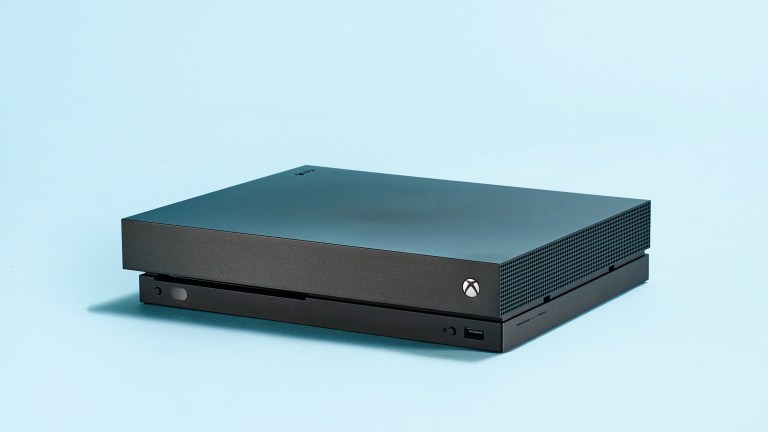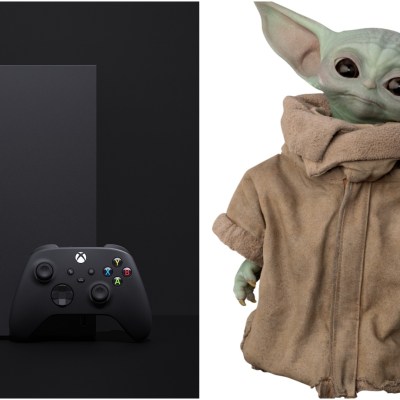How Xbox One Shaped the Future of Console Gaming
The Xbox One's sales struggles hide its true legacy as an innovative console that raised the bar for its competition and cleared the way for the Xbox Series X.

I never owned an Xbox One, and to be honest, I’ve never really regretted that decision, even as I prepare to get my hands on the Xbox Series X.
In some ways, the legacy of the Xbox One is defined by shortcomings. Microsoft’s infamously botched reveal of the console was lowlighted by the console’s investment in the now-defunct Kinect peripheral as well as its apparent dependence on a constant internet connection. And even though Microsoft addressed most of these issues over time, the tech company faced one problem it never entirely solved: an inability to consistently deliver compelling exclusives.
From Sunset Overdrive to Forza Horizon 4, there are definitely Xbox games from the last generation that you need to play that you can’t on a PlayStation 4 or Nintendo Switch. The problem is that there just never seemed to be enough Xbox One exclusives released in any given year. The GameCube suffered from a similar problem, but that console is at least fondly remembered for gifting the world with some all-time great games. It’s highly debatable whether there are any Xbox One console exclusives worthy of that honor.
All of these problems — and other factors, such as Microsoft’s continued struggles in certain international markets — led to what many see as a sound defeat for the Xbox One in the console war against the PS4. The numbers are never quite as bad in that area as some fans would lead you to believe, but the fact remains that current tallies suggest that PlayStation outsold Xbox in the last console generation at an almost a 2:1 ratio. When you’re talking about a margin as substantial as that, it’s easy to argue that something went wrong.
That’s the fascinating thing about the Xbox One’s legacy, though. It’s the rare video game console that deserves to be remembered as much for how it benefited those who owned it as it benefited those who did not.
The reason I can tell you about the Xbox One’s great exclusives despite never owning an Xbox One is that I got to play most of them on PC. While Microsoft has always had a closer relationship with PC gaming than other console manufacturers, the Xbox One was the console that broke down nearly every barrier that kept certain titles on consoles in the apparent hope of tempting PC gamers to purchase a new device for just a handful of games. It’s not a stretch to suggest that Microsoft’s success in the current PC market is a big part of the reason why studios like Sega and even the PlayStation team are supporting PC gaming in ways they never did before.
Remarkably, Microsoft’s continued support of the PC platform may be the least impressive example of the company’s two greatest virtues during the Xbox One generation: accessibility and consumer-friendly ways to play on the platform.
When I say accessibility, I’m of course talking about the Xbox team’s initiative to develop devices, such as the Adaptive Controller, that allow gamers with various disabilities to enjoy the titles they love with as few restrictions as possible. This is something that Microsoft doesn’t always get enough credit for (likely because it’s another measure of success that can’t be measured in sales figures alone), but it’s arguably a big part of the reason why we’re seeing so many developers work to include expanded accessibility options in their games.
But I also want to use the word in a broader sense. The fact remains that Microsoft championed accessibility during the Xbox One generation in ways that Nintendo and Sony often did not.
Microsoft began supporting cross-play at a time when Sony was arguing that the feature wasn’t good for its userbase. Sony eventually relented, especially as cross-play games like Fortnite and Call of Duty Warzone grew more popular, and gamers now expect nearly every multi-platform multiplayer title to have some kind of cross-play functionality.
The Xbox team also began developing cloud gaming technology when many still rightfully believed it was a pipe dream. But with services like Google Stadia, Amazon Luna, and NVIDIA GeForce Now, it’s clear Microsoft was ahead of the curve on this one. Even Sony confirmed in 2019 that it has partnered with Microsoft to further the advancement of cloud gaming on the PlayStation platform.
Microsoft also championed the importance of backward compatibility at a time when players had surrendered to the idea that the only way to play classic games on modern consoles was to purchase remastered re-releases. The company’s efforts in that field may be part of the reason why the PS5 will feature a (comparatively limited) backward compatibility system that the PS4 infamously lacked. With extensive backward compatibility options on Xbox Series X, Microsoft remains at the forefront of innovation in terms of finding new ways for more people to play more games than ever before.
Of course, you can’t talk about Microsoft’s consumer-friendly innovations without mentioning Xbox Game Pass. A “Netflix for gaming” has always been a hollow talking point, but Microsoft has made great strides in offering a service that almost replicates the streaming functionality of Netflix, especially with the cloud-based Xbox Game Pass app on mobile devices. Game Pass has cleared many of the hurdles of starting a gaming subscription service while also proving their growing necessity. Thanks to Game Pass, the idea of buying one $60 (or more) game at a time is beginning to feel archaic.
Game Pass wasn’t the first video game subscription service, but it was one of the first to feature the right combination of features and compromises. No, it doesn’t let you stream game on consoles, but it does let you download them with the option of purchasing them later at a reduced price. It even debuted for under $10 a month even though similar services proved that Microsoft could have easily charged more and few would have batted an eye, which is still a highly competitive price point when compared to other services.
From the very beginning, Game Pass was designed to be functional and accessible. Microsoft’s philosophy was that if you got people to try it, they wouldn’t want to go back. From there, the company grew Game Pass in ways that nobody anticipated. Who would have thought that Game Pass would eventually include day one Xbox exclusives at no additional cost? Who would have thought that Game Pass would grow to feature titles from EA’s own subscription program? It’s no wonder the service now boasts 15 million subscribers across all compatible platforms. The service is simply one of the best deals in gaming, even if you don’t own an Xbox and want to use it on PC.
If you break down all the ways that Game Pass eventually grew into the greatest subscription service in gaming, you’ll find that nearly every milestone was something that was ultimately good for Game Pass subscribers. Game Pass has proven to be valuable for Microsoft in ways that the Xbox One hardware never really was. It’s a big part of the reason why the next-gen console wars likely won’t be measured purely in terms of hardware sales. As the industry becomes increasingly reliant on engagement as its primary metric, it becomes harder to deny the long-term value of a service such as Xbox Game Pass. Even PlayStation Now has struggled to compete, largely due to Sony’s hesitance to port day one exclusives to the service.
That isn’t to say that Microsoft has been perfect or that it’s making all the right moves across the board. The Xbox Series X’s limited launch library shows that Microsoft hasn’t quite remedied its software shortcomings. And while the company’s acquisition of Bethesda might seriously beef up the next-gen console’s first-party lineup, the deal has also left gamers with serious questions regarding whether Microsoft will do the “consumer-friendly” and make future Bethesda titles available on competing platforms. When it comes to the games, Microsoft has to figure out how its going to balance accessibility and exclusivity in a way that makes sense for the fans and (let’s be honest) the shareholders.
When I think back on the legacy of the Xbox, it’s difficult not to view the mistakes Microsoft made through the lens of how it learned from those same mistakes. You could argue that the early version of the Xbox One was a little too forward-thinking for its own good, but I’d say that the biggest problem with the early days of the Xbox One was Microsoft’s inability to convey what it was trying to achieve. With its eyes on the future, Team Xbox overlooked what people wanted in the present. It would have been easy for Microsoft to stubbornly stay the course, but the company instead opted to admit what it did wrong, take a step back, and make sure the issues were addressed before it tried to take a bold leap forward again.
You may not have owned an Xbox One, either. You may have no real desire to purchase an Xbox Series X based on its current library of games. Yet, when we look back on the evolution of console gaming, it’s going to be hard to deny that the Xbox One paved the way for a more exciting path forward that will continue to unfold in the next generation.


